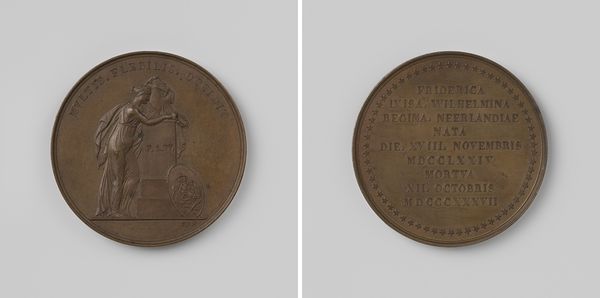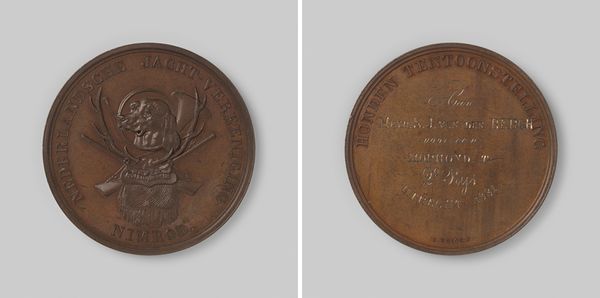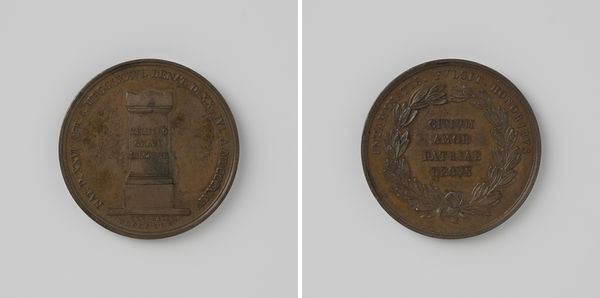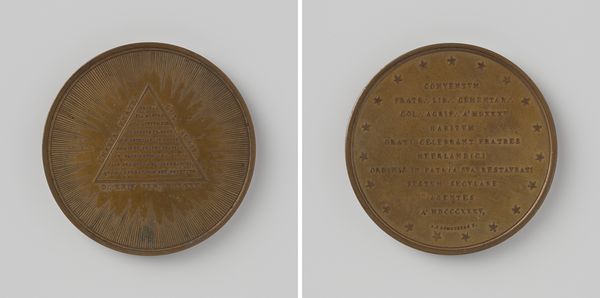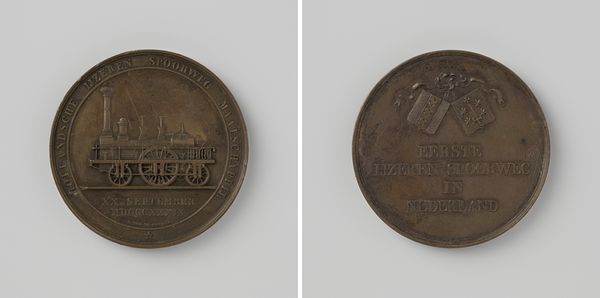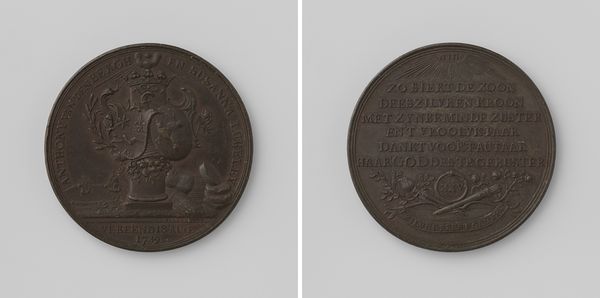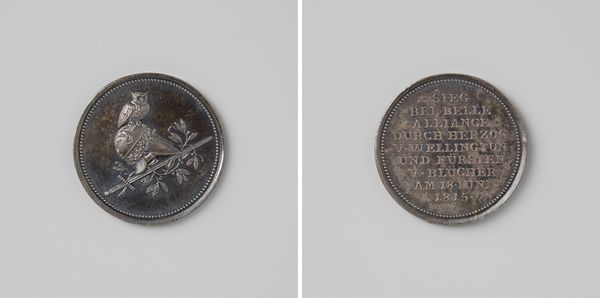
Overlijden van koningin Frederica Louise Wilhelmina der Nederlanden, vrouw van Koning Willem I 1837 1835
0:00
0:00
relief, bronze, sculpture
#
portrait
#
medieval
#
sculpture
#
relief
#
bronze
#
sculpture
Dimensions: diameter 4.1 cm, weight 35.62 gr
Copyright: Rijks Museum: Open Domain
Curator: Here at the Rijksmuseum, we have a bronze relief sculpture, crafted by David van der Kellen in 1835, entitled "Overlijden van koningin Frederica Louise Wilhelmina der Nederlanden, vrouw van Koning Willem I 1837" Editor: The sculpture is striking, even mournful. I am immediately drawn to the figure of the woman draped against a memorial or a plinth, isn’t it? There is such a heavy sense of sorrow in her posture. Curator: Precisely, its purpose as a commemorative object speaks volumes about 19th-century royal iconography. Medals like this one functioned as public pronouncements and records. These aren't merely sentimental pieces; they were deeply connected to statecraft and nation building. Editor: Absolutely, and this form would have been easily distributed, further enhancing the power of the monarchy. Who gets memorialized in art and who produces it, especially within institutions is never without societal implications. Curator: The neoclassical style reinforces this point. We have a goddess-like figure, embodying grief. The shield beside her is an emblem of her Royal status. Consider also how this imagery circulated amongst different social strata and solidified public memory. Editor: And it seems, doesn’t it, to be echoing older Greco-Roman and even medieval art traditions? What narratives does that weave into this story, whose narratives are made to be history. Curator: Indeed. Its adoption of these traditional modes reminds us that the crown held onto classical allusions of imperial authority. It would be difficult to look at this piece and forget that political power, its representation, its memory, all occur with a kind of calculated precision. Editor: This reflection leads me to see art not as passive reflection but as a forceful participant within society’s unfolding dramas and narratives. It shows the complexities inherent in memorializing figures and events in our history. Curator: Understanding that interrelationship allows for a richer understanding of Dutch royal history and public imagery in general. Editor: I appreciate understanding a time, however remote, through the lenses of contemporary discourse on class and social identity.
Comments
No comments
Be the first to comment and join the conversation on the ultimate creative platform.

